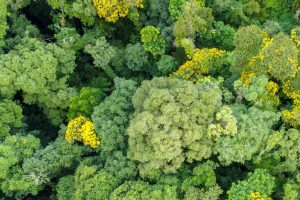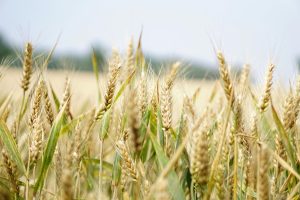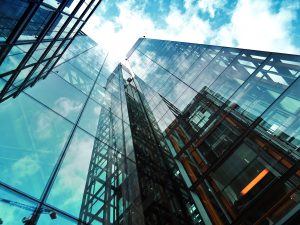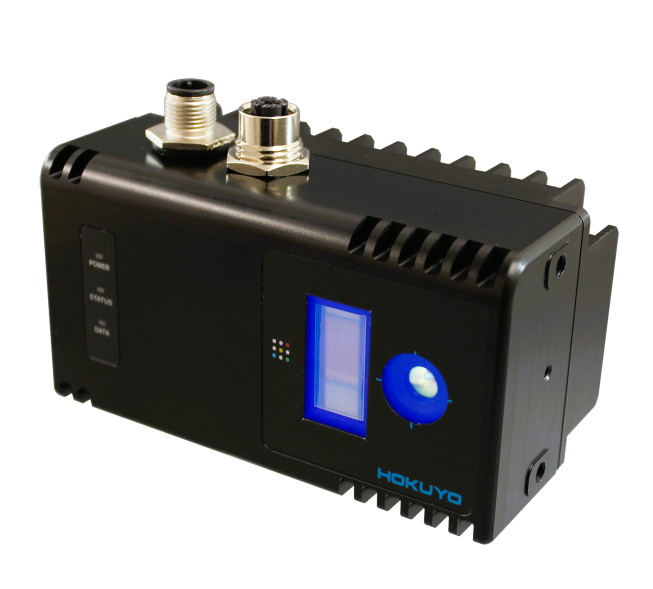LiDAR or radar?
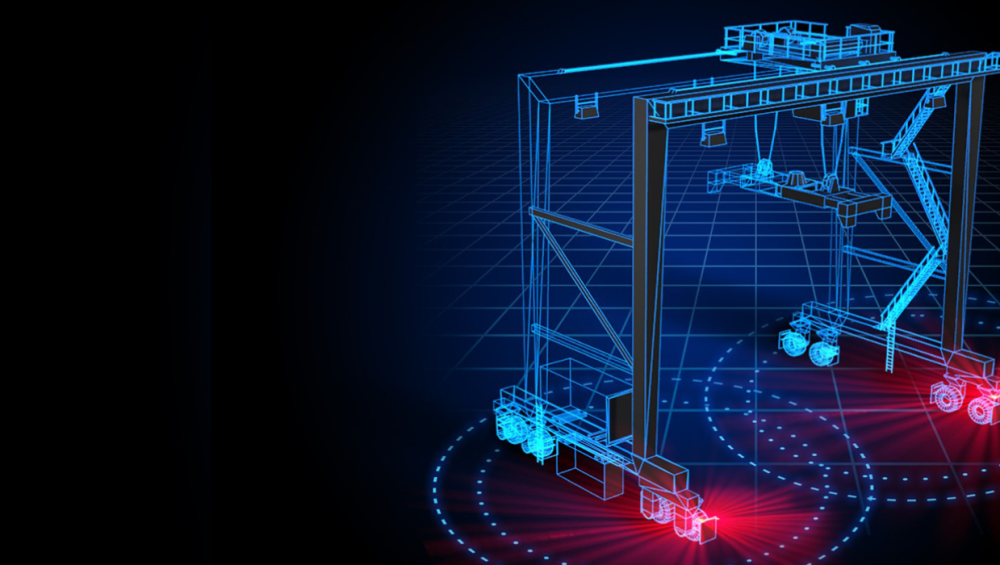
Which method of detection can benefit your application needs the best?
Industrial automation and the rise of the robot continues to hit the headlines. Devices such as LiDAR scanners and radar obstacle detectors are making this automation possible, but which one suits your application needs the most?
Read this blog to find out more about the LiDAR and radar solutions Sentek offers, and how they can help your application to succeed.
What is LiDAR?
LiDAR is generally accepted to be a 2D/3D laser based map making technology and stands for Light Detection And Ranging. Its uses are broad, to say the least, from driverless cars to deforestation mapping.
LiDAR is sometimes described as laser Scanning and LiDAR devices can be called laser range finders.
Hokuyo manufactures a vast array of powerful, compact and lightweight LiDAR devices and Sentek is the European distributor of these products.
How does LiDAR work?
Now for the science bit!
The LiDAR transmits a rotating invisible infra-red laser beam. Don’t worry, it’s entirely eye safe! The beam is reflected off surrounding objects and captured by the sensor. Combining rotational position and time for transmission/reflection gives a point map of the surrounding environment.
Hokuyo LiDAR devices use a stationary laser and a rotating mirror. The faster the mirror rotates, the quicker the scan speed/refresh rate. The tricky bit is making sure that the mirror is always precisely where it should be otherwise output data is not accurate. The fastest Hokuyo device has a scan speed of 100Hz. That’s 100 rotations every second.
Standard devices will only provide data for the ‘strongest reflection’ whilst multi-echo technology can return information for up to four reflections. This is useful when looking through a window or if weather conditions (fog, rain or snow) obscures the view. Having said this if we cannot see nor can the LiDAR.
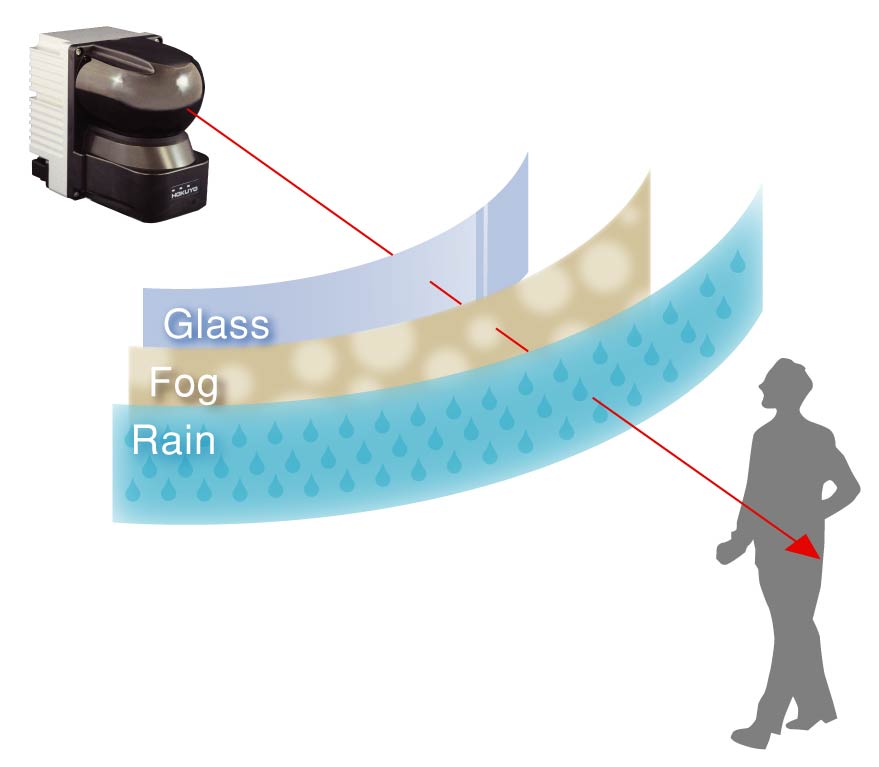
How the Multi-echo function works
Otherwise, LiDAR devices are classified according to their range and their resolution (angular and distance accuracy)
Where can LiDAR be used?
The US Geological Survey and NASA have been using LiDAR to make maps of Earth and space for decades. Climate scientists use it to probe the composition of the atmosphere and study things like clouds and global warming.
The uses of LiDAR are enormous. One of the most exciting things about LiDAR is that every year here at Sentek we hear about new uses for it.
We meet people at exhibitions or get enquiries from companies who have found a new way of using our LiDAR devices. And as the technology improves, we think the uses will keep growing, especially with developments such as the YVT-35LX 3D LiDAR scanner, outlined in our previous blog.
Here are just some of the ways our Hokuyo LiDAR scanners are currently being used:
- Obstacle detection and object measurement
- Industrial automation
- Navigation and localisation for robots
- Geospatial mapping
- Driverless vehicles
- Architecture
- Security
- Safety in factories and warehouses
- University teaching and research
Our products
There are a vast number of Hokuyo LiDAR devices all with different specifications.
You can browse our entire selection of LiDAR scanners here
You might find this video of one of our directors, Adam, discussing Hokuyo LiDAR scanners and their uses.
What is radar?
Radar was originally developed to detect enemy aircraft during World War II, but it’s now widely used in everything from police speed-detector guns to aeroplane navigation.
How does radar work?
Radar works by a sensor emitting a radio wave and then receiving the reflected wave when it bounces back from solid objects.
The radio waves used by radar are produced by a piece of equipment called a magnetron. Once the waves have been produced, an antenna, working as a transmitter, hurls them into the air. The radio waves travel outward from the antenna at the speed of light (186,000 miles or 300,000 km per second) and keep going until they hit something. Then some of them bounce back toward the antenna in a beam of reflected radio waves also travelling at the speed of light.
Unlike LiDAR which sends out its laser on a 2D plane, radar devices emit their radio waves in a cone shape, which expands over distance.
At Sentek, our radar technology devices from PPT are frequency modulated continuous wave (FMCW) radar sensors designed for collision avoidance applications on cranes, mobile cranes or vehicles.
Each sensor can transmit commands to stop and slow down, for example, and other commands for deceleration. In addition, the specific values needed are preprogrammed to suit the intended use.
Manufactured in robust housings the sensors are unaffected by rain, snow, fog or frost, which means they provide reliable and accurate information in many diverse environments.
Where can radar be used?
The PPT RadarRanger is ideally suited for the harsh environment and high-reliability requirements of busy container ports. In busy ports safety and efficiency are key and when a break in production is expensive RadarRanger obstacle detectors are the perfect solution.
Applications include crane to crane and crane to object detection on ship to shore, RTG and RMG type cranes.
Large reach stackers and straddle carriers often have blind spots or areas that are difficult for the operator to monitor when moving freight. The RadarRanger sensors offer an additional set of eyes to help avoid collisions and ease movement in tight spots.
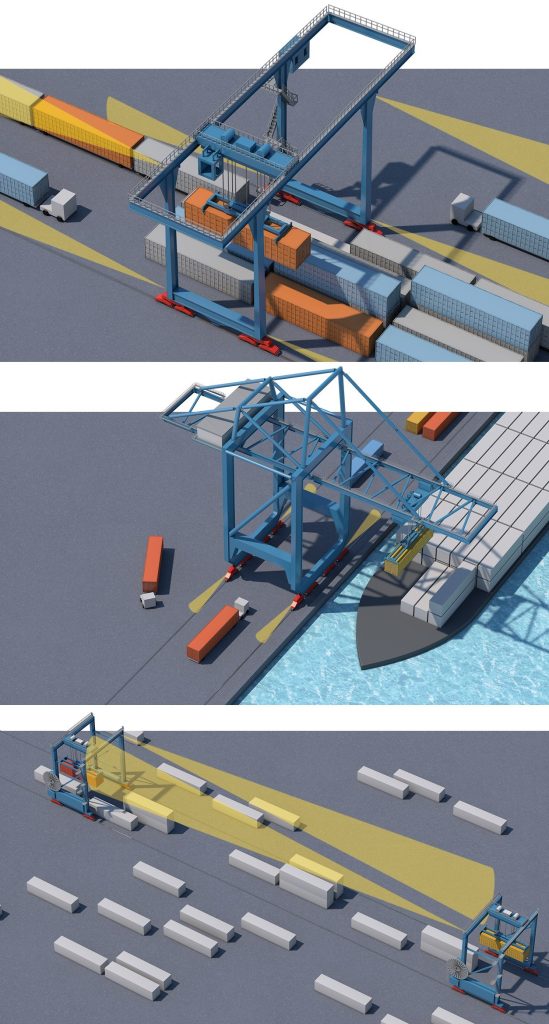
How Radar Ranger devices can be used in port crane applications
The RadarRanger sensors have a variety of distance and beam angle options to suit most applications and, with thousands of units already in operation throughout the world, they have a proven track record.
Their robust housings mean that where other sensors fail or atmospheric contamination causes detection problems and maintenance issues, the RadarRanger sensors provide a constant reliable, collision avoidance system second to none.
Large reach stackers and straddle carriers often have blind spots or areas that are difficult for the operator to monitor when moving freight. The RadarRanger sensors offer an additional set of eyes to help avoid collisions and ease movement in tight spots.
Our products
You can browse our full selection of radar obstacle detectors here
Both LiDAR and radar sensors provide numerous industries with fantastic capabilities. One isn’t better than the other but some jobs will need a LiDAR scanner, while other operations will benefit from a radar sensor. If you’d like more information about how both products can add value to your business, just give us a call.
We’re always happy to provide information on any of our products, just drop us an email if you’d like to know more.
Stay up to date with all of our news and product developments by following us on Twitter.

